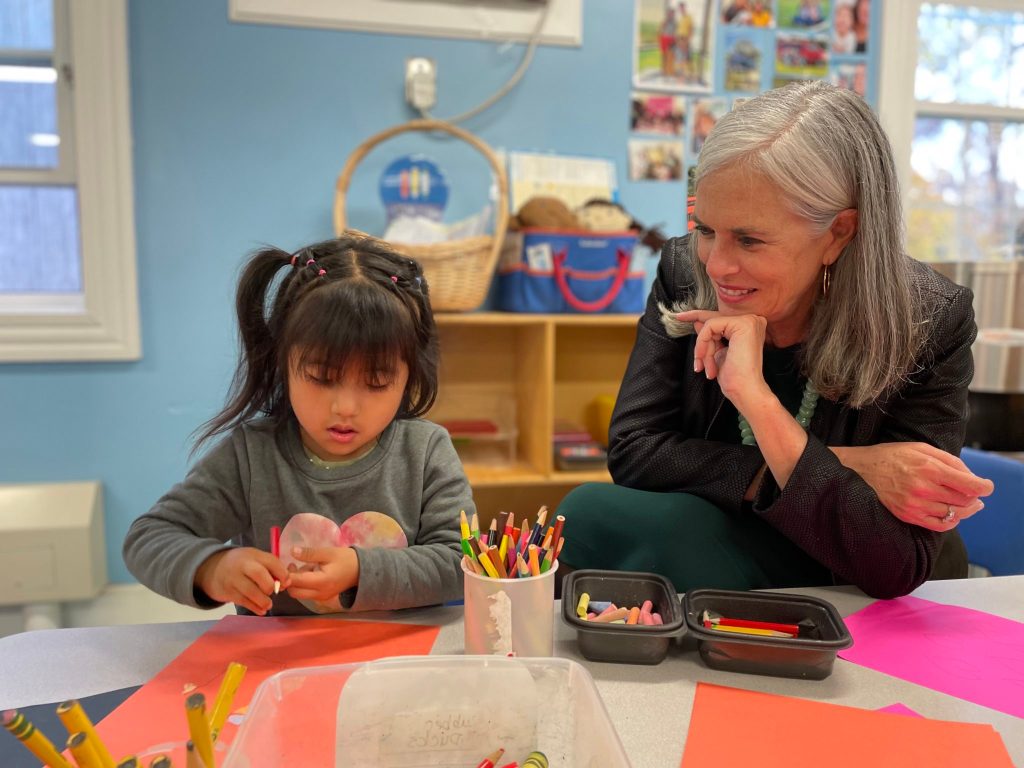
MASSACHUSETTS’ CHILD CARE system serving the state’s most vulnerable children has seen improvement in recent years, but a new report warns that issues with recruiting and keeping workers could undermine efforts to expand access to affordable child care. With federal support from a second Trump administration uncertain, funding these programs increasingly depends on Bay State budget math.
“Lifting up the early education workforce is the next critical area of need,” the report from the Massachusetts Taxpayers Foundation asserts. “The early education workforce is overwhelmingly composed of women (92 percent) and nearly half are people of color (41 percent). The workforce also represents thousands of small businesses in the state; their success is critical to Massachusetts’ economic success.”
Early education child care wages tend to be low and with limited opportunity for growth, compared to other comparable jobs like elementary and middle school teachers, teacher’s assistants, nurses, and home health aides.
Child care center-based lead teachers on average earned about $43,000 a year in 2024, which is up substantially from the pandemic but just half the average salary of a K-12 teacher in recent years, the report found.
The report focuses on the state’s child care financial assistance system (CCFA), serving over 65,000 children across Massachusetts. Eligible families, if they can navigate the system and make it off of the lengthy waitlist, have two options for accessing child care through the CCFA system – using a voucher at any child care provider that accepts vouchers, or a reserved contract slot with a specific provider who has a contract with the Department of Early Education and Care.
A report in 2023 from the taxpayers foundation made six recommendations to improve the system, three of which have seen movement since then. These changes incorporate the cost of care model into the provider reimbursement rate structure, make compliance requirements more family-friendly, and use the Commonwealth Cares for Children grant program to increase provider participation in the CCFA system.
“[T]here is more work to do especially around the expansion of available seats and the use of technology to improve system efficiency, family engagement, and provider experience,” the report authors wrote. “However, ultimately if there is not a strong, sustainable, and well-compensated early education and care workforce, it will be difficult to expand access for children system-wide.”
Shoring up the early child care system is an expensive project.
The childcare financial assistance program, which is budgeted for $773.8 million in the most recent cycle, is funded through the state budget and federal child care resources. In President Donald Trump’s first term, he originally proposed cutting the Child Care and Development Block Grant program by $95 million, but ultimately signed an increase into law when Congress sent it to his desk.
House Minority Whip Katherine Clark, of Melrose, who has been laser focused on child care costs, reintroduced two bills – the Child Care Infrastructure Act and the Child Care Workforce Development Act – in September.
Republicans, Clark said at the time, are planning to make child care “even more expensive and even harder to find” through proposals like eliminating the federal Head Start program serving low-income families, privatizing education spending, and eliminating the federal Department of Education. These priorities have been floated in public statements from Trump during the 2024 campaign and fleshed out in the Project 2025 report published by the Heritage Foundation.
“We’re offering an alternative in which students don’t get the bare minimum, they get the best; an alternative where parents don’t just get by, they get ahead; and a situation where early childhood educators are not taken for granted — they’ll be paid and honored like the essential workers they are,” Clark said.
The workforce development act would provide up to $4,000 in annual support to individuals pursuing an associate’s degree or a certificate in early childhood education, as well as authorize the Department of Health and Human Services to administer a student loan repayment program, repaying up to $6,000 annually for five years for educators working for providers receiving Child Care and Development Block Grant funding.
But that set of priorities now faces a substantial red wall, with a Republican-controlled White House, Senate, and House of Representatives set to be sworn in come January. Trump this week nominated billionaire professional wrestling mogul Linda McMahon to be secretary of education, promising McMahon would champion school choice through vouchers and “send education back to the states.”
In Massachusetts, the recent fiscal year 2025 budget includes a $1.5 billion investment in the child care sector, plus policy provisions updating the state’s early education statute. This fully codified the Commonwealth Cares for Children grant program, which was initially funded through federal COVID stabilization dollars, into state law and funds it with state dollars including anticipated new online lottery revenues.
“Though difficulties in securing greater federal investment remain,” says the new taxpayers foundation report, the state early education department has made “significant strides toward reforming how child care providers are reimbursed, and it is continuing its work to understand the true cost of care and how best to incorporate those calculations into a complicated system.”
The post Early child care system has a workforce problem appeared first on CommonWealth Beacon.

